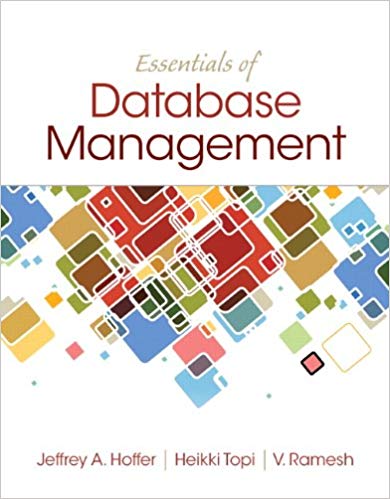Based on the EER diagram constructed for Problem and Exercise 14, develop a sample definition for each
Question:
Based on the EER diagram constructed for Problem and Exercise 14, develop a sample definition for each entity type, attribute, and relationship in the diagram.
Data from Exercise 14.
Develop an EER model for the following situation using the traditional EER notation, the Visio notation, or the subtypes inside supertypes notation, as specified by your instructor: Wally Los Gatos and his partner Henry Chordate have formed a new limited partnership, Fin and Finicky Security Consultants. Fin and Finicky consults with corporations to determine their security needs. You have been hired by Wally and Henry to design a database management system to help them manage their business. Due to a recent increase in business, Fin and Finicky has decided to automate its client tracking system. You and your team have done a preliminary analysis and come up with the following set of entities, attributes, and business rules:
Consultant: There are two types of consultants: business consultants and technical consultants. Business consultants are contacted by a business in order to first determine security needs and provide an estimate for the actual services to be performed. Technical consultants perform services according to the specifications developed by the business consultants.
Attributes of business consultant are the following: Employee ID (identifier), Name, Address (which is composed of Street, City, State, and Zip Code), Telephone, Date Of Birth, Age, Business Experience (which is composed of Number of Years, Type of Business [or businesses], and Degrees Received).
Attributes of technical consultant are the following: Employee ID (identifier), Name, Address (which is composed of Street, City, State, and Zip Code), Telephone, Date Of Birth, Age, Technical Skills, and Degrees Received. Customer Customers are businesses that have asked for consulting services.
Attributes of customer are Customer ID (identifier), Company Name, Address (which is composed of Street, City, State, and Zip Code), Contact Name, Contact Title, Contact Telephone, Business Type, and Number Of Employees.
Location: Customers can have multiple locations. Attributes of location are Customer ID (identifier), Location ID (which is unique only for each Customer ID), Address (which is composed of Street, City, State, and Zip Code), Telephone, and Building Size.
Service: A security service is performed for a customer at one or more locations. Before services are performed, an estimate is prepared. Attributes of service are Service ID (identifier), Description, Cost, Coverage, and Clearance Required.
Additional Business Rules: In addition to the entities outlined previously, the following information will need to be stored to tables and should be shown in the model. These may be entities, but they also reflect a relationship between more than one entity:
• Estimates, which have characteristics of Date, Amount, Business Consultant, Services, and Customer
• Services Performed, which have characteristics of Date, Amount, Technical Consultant, Services, and Customer In order to construct the EER diagram, you may assume the following: A customer can have many consultants providing many services. You wish to track both actual services performed as well as services offered. Therefore, there should be two relationships between customer, service, and consultant, one to show services performed and one to show services offered as part of the estimate.
Step by Step Answer:

Essentials of Database Management
ISBN: 978-0133405682
1st edition
Authors: Jeffrey A. Hoffer, Heikki Topi, Ramesh Venkataraman





